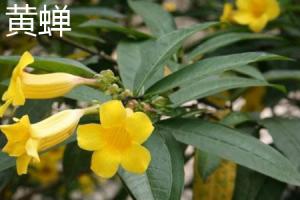1、 Curing method
1. Temperature: soft branch yellow cicada likes slightly higher temperature, so that it can grow well. Specifically, at 20 to 30 degrees, it is more appropriate. Below zero, it grows slowly. Above 30 degrees, there are also adverse effects

2. Light: the soft branch is yellow, and the cicada likes light. Under good sunshine conditions, it will grow well and bloom well. However, the strong light in summer should be shielded, and after breeding. In both cases, artificial shading is required, and the degree of shading is preferably between 50% and 80%

3. Watering: the soft branch yellow cicada likes humidity and needs to keep the substrate moist. At the same time, pay attention to the air humidity, which should be between 75% and 85% as far as possible. When it is very dry, spray some water every day. After breeding, it is also necessary to ensure the humidity of the air

4. Fertilization: the soft branch yellow cicada does not need much fertilizer. Soil with more nutrients can be selected, and then topdressing can be done once or twice a month

2、 Breeding skills
1. Propagation: cutting method can be used. This method is more suitable in spring and autumn. It is best to choose branches that are one to two years old and have a length of 15 to 20 cm, and it is best to have three or four nodes on them. Sandy soil can be used as the matrix of cutting. After insertion, it should be placed in a cool place and kept wet, and the temperature should be about 20 degrees as far as possible. After about twenty days, it can take root. When it grows to about ten centimeters high, it can be transplanted

2. Pruning: first of all, the step of picking the heart is very important, because it directly affects the number of subsequent flowers. In addition, it is to trim other unsuitable branches, such as dry, yellow and so on

3、 Problem diagnosis and treatment
1. Disease: in summer and autumn, the disease that is easy to appear is called "leaf blight", which causes leaves to fall. In case of poor ventilation, the disease will be relatively serious. It can be treated with chlorothalonil and ventilated more

2. Insect pests: they are mainly "red spider" and "scale insect", which can be eliminated by quick culling

4、 Other issues
1. Toxicity: it is toxic. The toxicity is concentrated in bark, leaves, flowers, seeds and other parts

2. Whether it can be raised at home: generally not, because it is poisonous< a>


 how many times do yo...
how many times do yo... how many planted tre...
how many planted tre... how many pine trees ...
how many pine trees ... how many pecan trees...
how many pecan trees... how many plants comp...
how many plants comp... how many plants can ...
how many plants can ... how many plants and ...
how many plants and ... how many pepper plan...
how many pepper plan...

































